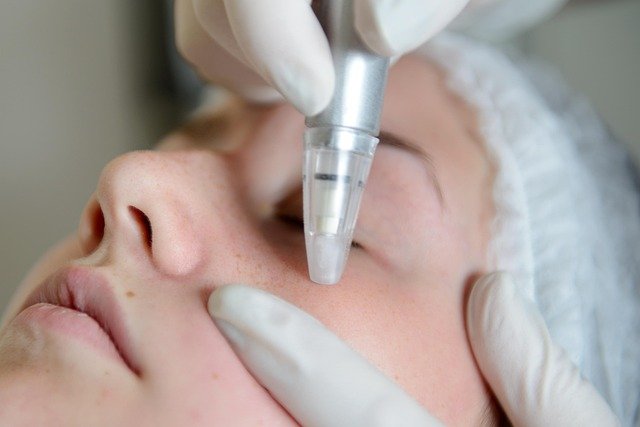Laser Skin Rejuvenation: Benefits, Process & Costs
Discover how laser skin rejuvenation can refresh your complexion, reduce wrinkles, fade sun spots, and improve texture. This comprehensive guide explains how different lasers work, what conditions they treat, the typical treatment journey, potential risks, and cost ranges to help you make an informed decision.

Skin that looks smoother, clearer, and more youthful is a common goal—and laser skin rejuvenation has become a leading option to help achieve it. By harnessing focused light energy, modern laser treatments stimulate repair and renewal, tackling a variety of concerns from fine lines to uneven pigmentation. Below is a practical, easy-to-follow guide on how these procedures work, what they can treat, the typical experience, benefits and risks, and what to expect in terms of cost.
How laser skin rejuvenation works
Laser skin rejuvenation uses concentrated beams of light to target specific layers of the skin. When the light is absorbed by tissues, it creates controlled micro-injury. That deliberate damage prompts your body’s repair systems—boosting collagen production and encouraging the growth of fresh, healthier skin cells. Over weeks and months the skin remodels, often becoming firmer and more evenly toned.
There are two broad categories of lasers:
- Ablative lasers: These remove the epidermis, the skin’s outer layer, producing dramatic resurfacing results. Recovery is longer but outcomes can be substantial for deep wrinkles and significant texture issues.
- Non-ablative lasers: These penetrate beneath the surface without stripping the top layer. They stimulate collagen more gently, with less downtime, and are useful for milder signs of aging and color irregularities.
Clinicians choose specific laser types and settings based on your skin type, concerns, and desired recovery time.
Common skin issues treated with lasers
Laser rejuvenation is versatile and can help with many cosmetic concerns, including:
- Fine lines and dynamic wrinkles
- Sun damage, age spots, and uneven pigmentation
- Rough or bumpy texture and enlarged pores
- Acne scars and other scar types
- Visible redness and broken capillaries
- Mild to moderate skin laxity
Effectiveness varies by technology and individual factors such as skin tone, the severity of the condition, and overall skin health. A consultation with a qualified provider will clarify whether laser therapy is suitable for your needs.
What to expect during the treatment process
Most laser rejuvenation journeys follow a predictable sequence:
- Consultation: During an initial visit, a trained practitioner evaluates your skin, medical history, and aesthetic goals to recommend the right laser and treatment plan.
- Preparation: Your provider will cleanse the area and may apply a topical anesthetic or cooling methods to reduce discomfort.
- Treatment session: The laser handpiece is moved across the treatment area, delivering calibrated bursts of energy. Session length depends on the size of the area and the chosen technology—some take 30 minutes, others up to two hours.
- Aftercare: Post-treatment instructions commonly include using gentle moisturizers, avoiding sun exposure, and following any wound-care guidance. Recovery timelines differ according to whether the procedure was ablative or non-ablative.
Multiple sessions are often needed to achieve optimal results, particularly for non-ablative approaches.
Benefits and potential downsides
Advantages of laser skin rejuvenation include:
- Noticeable improvement in skin texture and tone
- Reduction of fine lines and pigmentation irregularities
- Enhanced collagen production for firmer-looking skin
- Faster recovery compared with many surgical procedures (depending on laser type)
- Long-lasting outcomes when combined with good skincare and sun protection
However, no treatment is without risk. Possible side effects and complications include:
- Temporary redness, swelling, or irritation
- Discomfort during and after the procedure
- Changes in pigmentation (hyperpigmentation or hypopigmentation), more likely in darker skin types
- Small risk of infection when aftercare is not followed
- Rare scarring, particularly if performed by inexperienced providers or when post-care is inadequate
Choosing an experienced, board-certified dermatologist or licensed practitioner minimizes these risks.
Typical costs and treatment frequency
Below is a general pricing guide to help set expectations. Prices vary by clinic, practitioner expertise, geographic area, and the specific laser technology.
| Treatment Type | Average Cost Range | Number of Sessions Typically Needed |
|---|---|---|
| Fractional Laser | $1,000 - $2,500 per session | 3-5 sessions |
| IPL (Intense Pulsed Light) | $300 - $600 per session | 3-6 sessions |
| CO2 Laser Resurfacing | $2,000 - $4,000 per treatment | 1-2 sessions |
| Non-ablative Laser | $800 - $1,500 per session | 3-6 sessions |
Prices, rates, or cost estimates mentioned in this article are based on the latest available information but may change over time. Independent research is advised before making financial decisions.
Many clinics offer package pricing for multiple sessions and financing options to spread the cost. During your consultation, ask about total expected treatments, maintenance visits, and any bundled discounts.
Making the right choice
Laser skin rejuvenation can be a powerful tool for restoring a fresher complexion, but choosing the right approach requires personalized assessment. Consider the following before booking:
- Have a professional skin evaluation to determine the best laser type for your concerns and skin tone.
- Ask about the provider’s experience, certifications, and before-and-after photos from prior patients.
- Understand the recovery timeline and plan accordingly—some procedures need downtime for optimal healing.
- Follow pre- and post-treatment instructions closely to reduce complications and get the best results.
When performed by skilled clinicians, laser therapies can deliver meaningful, long-lasting improvements. Pair treatment with sun protection, quality skincare, and realistic expectations for the most satisfying outcome.
This article is for informational purposes only and should not be considered medical advice. Please consult a qualified healthcare professional for personalized guidance and treatment.






